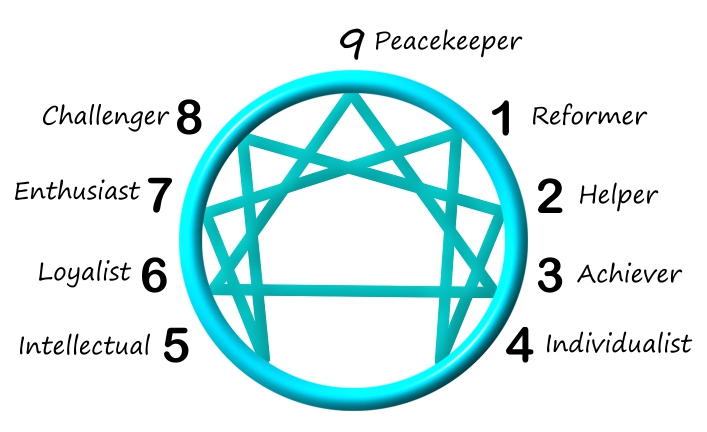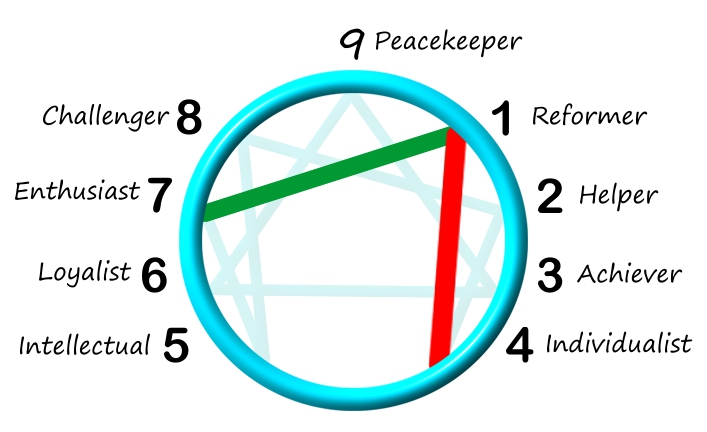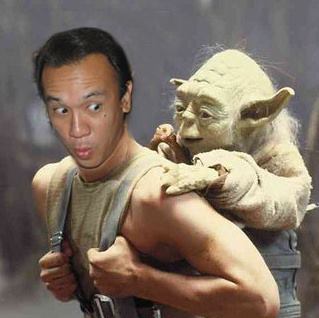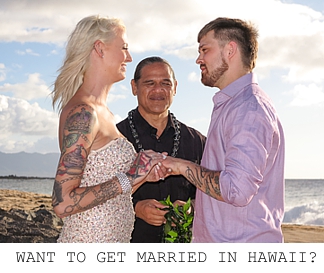
Before you freak out, don’t worry, I’m not trying to recruit you to some version of Wicca. Step One doesn’t involve joining a cult, that happens in Step
The purpose of this page is to brief you on what you’re about to learn, which is the Enneagram. This tool will help you analyze personalities from the inside out, both real and fictional, and help you create colorful believable characters that will write your story for you. Sounds great doesn’t it?
THE HISTORY OF THE ENNEAGRAM
If you’re wondering, I didn’t create the Enneagram. The exact origins can’t be verified and are up for debate. I saw something on Wikipedia that it may have been created in Africa by two dudes, one being a psychiatrist that kinda looked like a Smarter-Skinnier-Spanish-Jewish version of Santa Clause.
I truly don’t care who invented the Enneagram and neither should you.
All I care about is accuracy.
And you know what? For some reason, this pseudoscience is really precise. If you don’t think it is, that’s okay. Although, it will help if you take it seriously as it’ll help you craft your story.
HOW THE ENNEAGRAM APPLIES TO STORYTELLING
One of the highest hurdles any author faces is the primary task of creating believable characters that their audience can relate too.
Let’s do a quick exercise:
Batman and Robin pull into the Kwik-E-Mart to get a quick snack. Superman drops in as well, he wants a diet soda. Apu slides a tray of fresh hot donuts on the counter. Homer Simpson trots in, whistling to himself, just as Apu slams a sign down on the counter that reads:
“Free Donuts! Next Customer Only!”
Now, imagineer that scene.
Heres what I have in my head.
Homer dives for the donut and Batman
I’m sure while we all didn’t craft up the exact story, but I’m betting it was similar. We were all on the same wavelength because we knew these characters rather well, we knew their personality.
What if you could easily assign a personality number to these characters instead of names? Now it wouldn’t matter if it was Batman, Superman, Robin, Apu, or Homer. And that’s what the Enneagram does. To someone who speaks the language of the Enneagram, I can tell them, “An Unhealthy Crime Fighting One (Batman) walks into a store. There a Healthy Two with superpowers is stopping by (Superman). A donut loving Nine walks in (Homer).” Immediately, any screenwriter versed in the Enneagram would be on the same page as me.
The Enneagram helps you understand personalty, the better you understand personality, the easier it is to write a story. Therefore, the better you understand the Enneagram, the better you will be at writing a story.
HOW THE ENNEAGRAM DIFFERS FROM PSYCHOLOGY
Think of the Enneagram as the really cool kid in class that everyone loves, yet isn’t a prick. He gets along with everyone and everything, including the unpopular kid in the third period. Because the Enneagram is the cool kid, he and psychology are best friends. And because the Enneagram isn’t a Grade A douche, he also gets along with all theories of psychology, religions,
I do prefer the Enneagram over traditional psychology because the Enneagram helps me understand a person’s full personality spectrum. Psychology tends to focus on diagnosing ailments and solving them.
For example, on the Enneagram, I am Type One – A Reformer. My greatest motivating factor that fuels me, is the fear of doing the wrong thing, or even being wrong. I have my own personal moral code that I abide by which makes me very critical of myself and others. I don’t drink, I don’t smoke, I don’t do drugs. Law and Order
With psychology, it would be very difficult, not impossible, to develop a complete personality profile of me. A psychologist would only care about what ailment they believed I had, possibly
But in a story, you’re not trying to fix anyone. You want to create a character.
THE SUPER-EGO: FEAR, ANGER, AND AGENDA
So, at first, I didn’t want to sound like a warlock. Now I don’t wanna sound like a hippy! But I have to admit, the far majority of people in the world want peace, love, harmony, and all that good stuff that was trending in the
The problem is that for some unexplained reason, we are our own worst enemy, and we stop ourselves from “obtaining nirvana.” Our strengths – are also our greatest weakness. And more often than not, when all it takes is letting go of our fears, our super-ego takes over. And what was once an easy solution to
The Enneagram focuses on the super-ego within all of us, the one that is powered by fear, feeds on anger, and is obsessed with agendas. Ironically, although our super-ego works against us, it also gives us our personality, so it’s not as though we can live without it. This doubled-edge sword defines us.
The Enneagram helps define what type of sword we wield.
THE NINE PRIMARY TYPES OF PERSONALITIES
Are you wondering what type of sword your carrying?
There are nine different personality types in the Enneagram and each are assigned a number as follows:
Take in mind, that at times there can be subtleties between each personality type, depending on that individual’s or character’s compulsions. For the vast majority of us, we will most likely gravitate toward one these personality types more than others, and call it home. But that doesn’t mean we won’t visit others.
And by the way, we have all 9 degrees of personality in us. So that crap you hear about creating 3-Dimensional characters, well, it’s crap. We have 9-dimensions. So we’re a little bit of everything, but we call one personality – home.
Learning about each of these personalities is where it all begins – your journey to being a complete writer. Once you understand the ingredients of human behavior, you’ll be able to write realistic characters, that can push your story forward.
WHAT ARE THOSE LINES FOR?

The Type One “Reformer” diagram
The lines on the diagram show how one personality type relates to another while growing or disintegrating, aka happy or mad – I like to say growth or triggered.
I understand that this diagram may not make sense right now, but I’ll touch upon this more as you learn the basics of all the nine types of personalities and I’ll also dedicate a blog to it. Just keep in mind, that those lines are very important, but they’ll only make sense AFTER you learn and memorize each personality type.
I promise, I’ll dedicate a whole article on this. Those lines are how you will create colorful characters!
Okay, now onto the learning the Enneagram!
UP NEXT! THE NINE DIFFERENT PERSONALITY TYPES!



